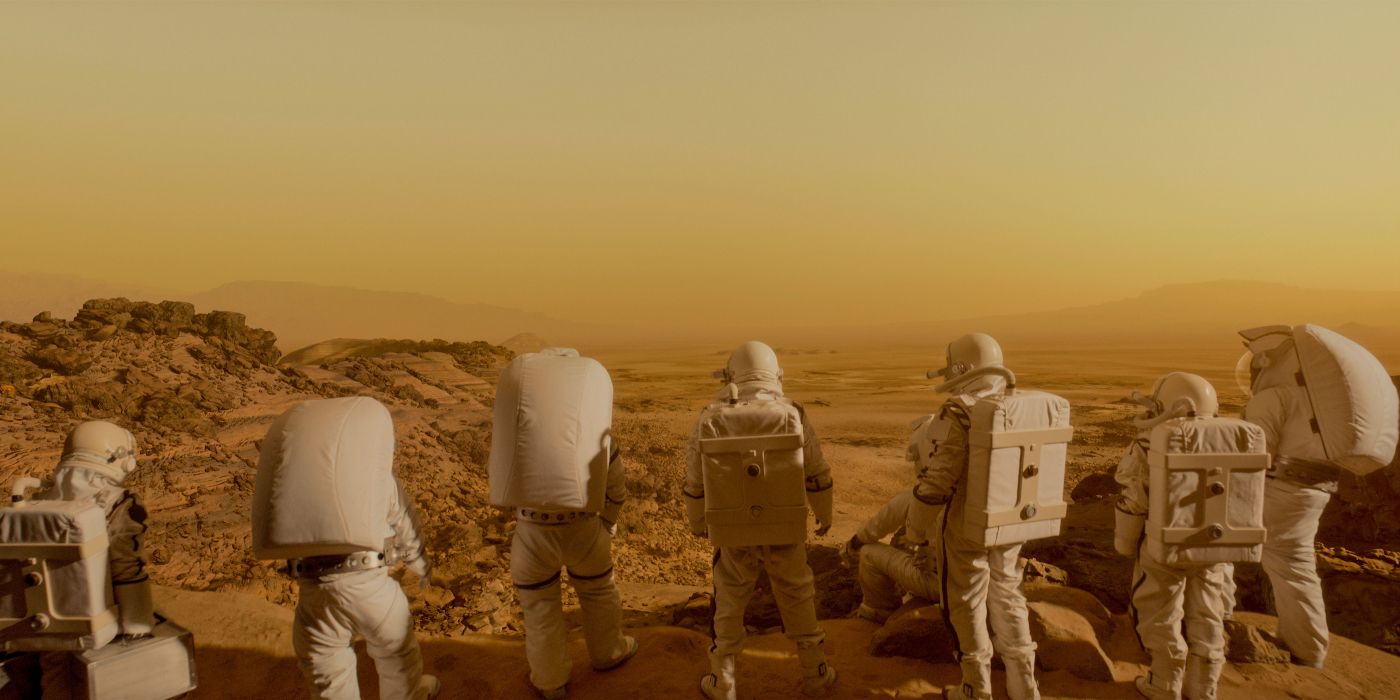For All Mankind has been one of my favorite shows for the last few years. An alternate history series where the Soviets get to the moon before the United States, it shows how our history would change based on that simple fact. The first season showed the aforementioned moon race and the fallout from not being first, while the second leaned on the challenge of colonizing the moon and sharing the surface with the Russians.
The third season, meanwhile, primarily focuses on the race to Mars. Not only is it the Russians and the Americans in this race, but there is a third, private company locked in the battle to get to Mars first. Helios is an American company, but it doesn’t matter. The race to Mars is the race to see whose space program is superior: the Russian government, the American government, or the American private sector.
While Seasons 1 and 2 were very much of an alternate history, Season 3 feels a bit more science fiction-y. For one, there is the “going to Mars” thing, something that no one from Earth has been able to accomplish as yet. Additionally, this season opens with space tourism – one aspect that, while our own reality is getting closer to, isn’t here just yet. For All Mankind opens in 1992, in the first space hotel orbiting around the Earth, and eventually fast-forwards into 1994, when all three space agencies are ready to go to Mars – although the Soviets and the Americans had originally planned to go in 1996.
Space tourism and the privatization of space travel are, obviously, very modern concerns. (Though Helios doesn’t build any penis-shaped rocket ships.) But for a show set almost 30 years in the past, it offers a weird, unsettling feeling: is this now or then? The fashions are certainly “then”; the political landscape, with markers like “Don’t Ask, Don’t Tell” is certainly “then.” The aforementioned tourism and privatization, along with a lot of the technology, are much more “now,” with the likes of video calling and flat-screen TVs. For as advanced as space travel is, terrestrial technology seems stuck in a weird in-between, with objects that are similar to Palm Pilots, but bigger and heavier, and computers that still seem larger than they need to be.
Despite all of that, it is the stories and relationships of For All Mankind that really drive the show, and this season maintains all of that. Though there are squabbles, everyone still gets along pretty well, with the conflict coming mostly from various space disasters. Danny (Casey W. Johnson) and Jimmy (David Chandler) are still dealing with the fallout of their parents' deaths – and neither of them does it in a healthy manner; Karen (Shantal VanSanten) and Ed (Joel Kinnaman) are divorced, but still friendly; Kelly (Cynthy Wu) is doing research in Antarctica; Margo (Wrenn Schmidt) is still anxiously entwined with Sergei; Aleida (Coral Pena) has moved up to be Margo’s number two; Danielle (Krys Marshall) is still eager to be the first human on Mars, but so is Ed. Ellen (Jodi Balfour) still loves Pam, but she and Larry (Nate Corddry) have a comfortable lavender marriage, complete with a child, as she runs for President of the United States – on the Republican ticket.
For All Mankind is a fascinating, underrated show that offers science-fiction/alternate history on top of great storylines, strong characters, and well-written episodes. It all works together seamlessly without feeling like storylines are being sacrificed in the name of spectacle. If you liked the first two seasons, the third keeps up the momentum.
Rating: A-
For All Mankind Season 3 premieres its first episode on June 10, followed by one new episode weekly, every Friday, on Apple TV+.


